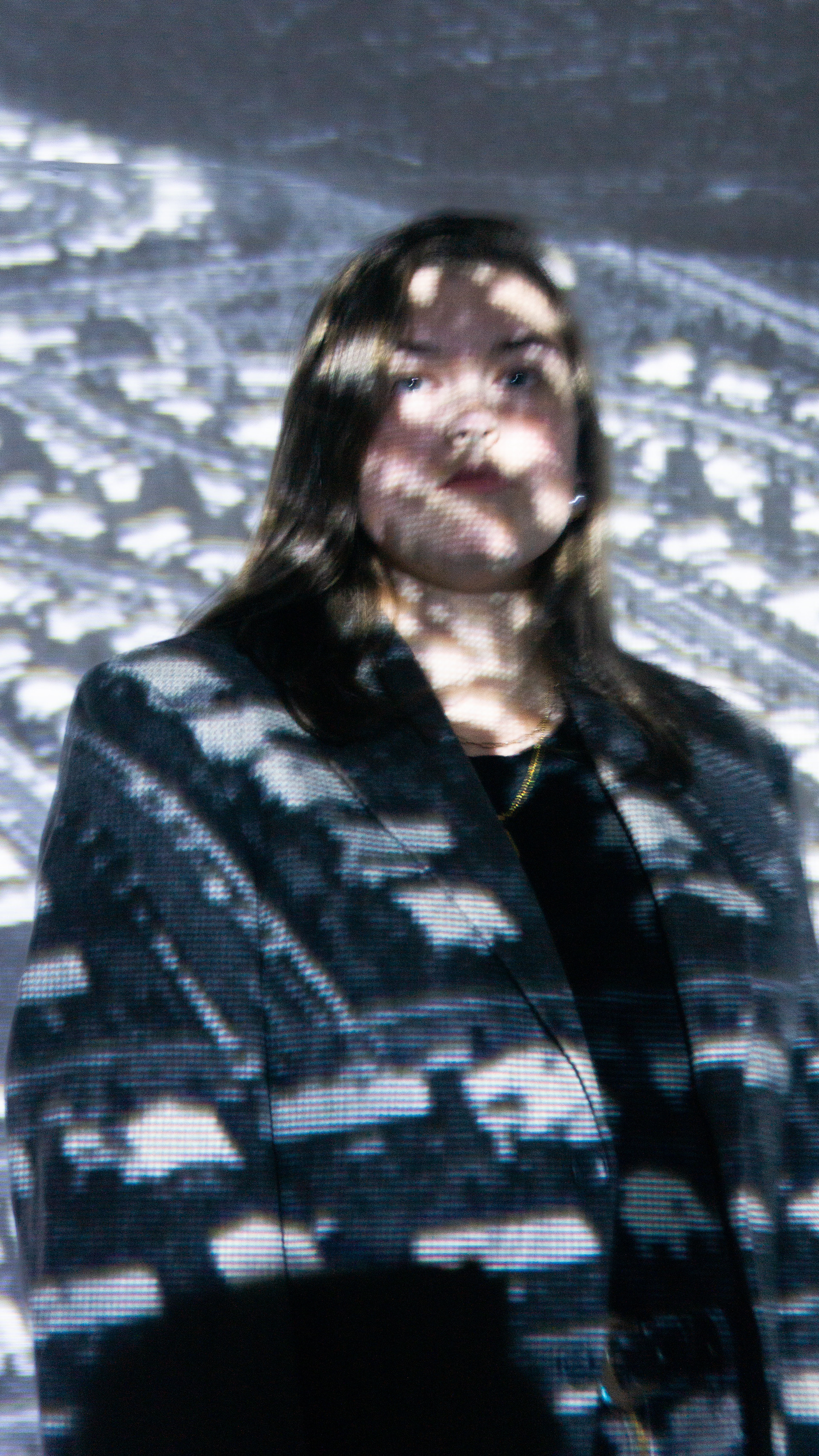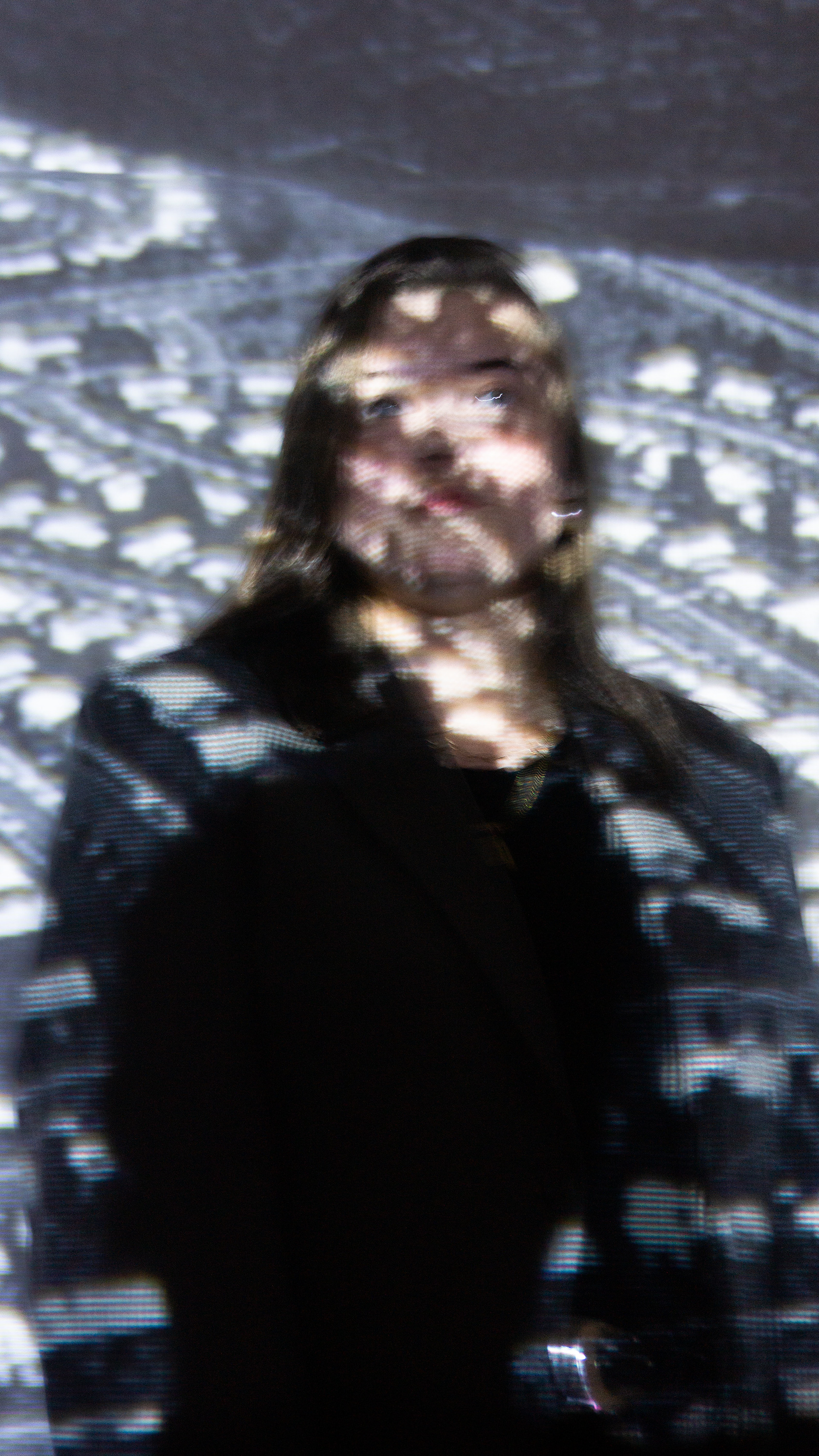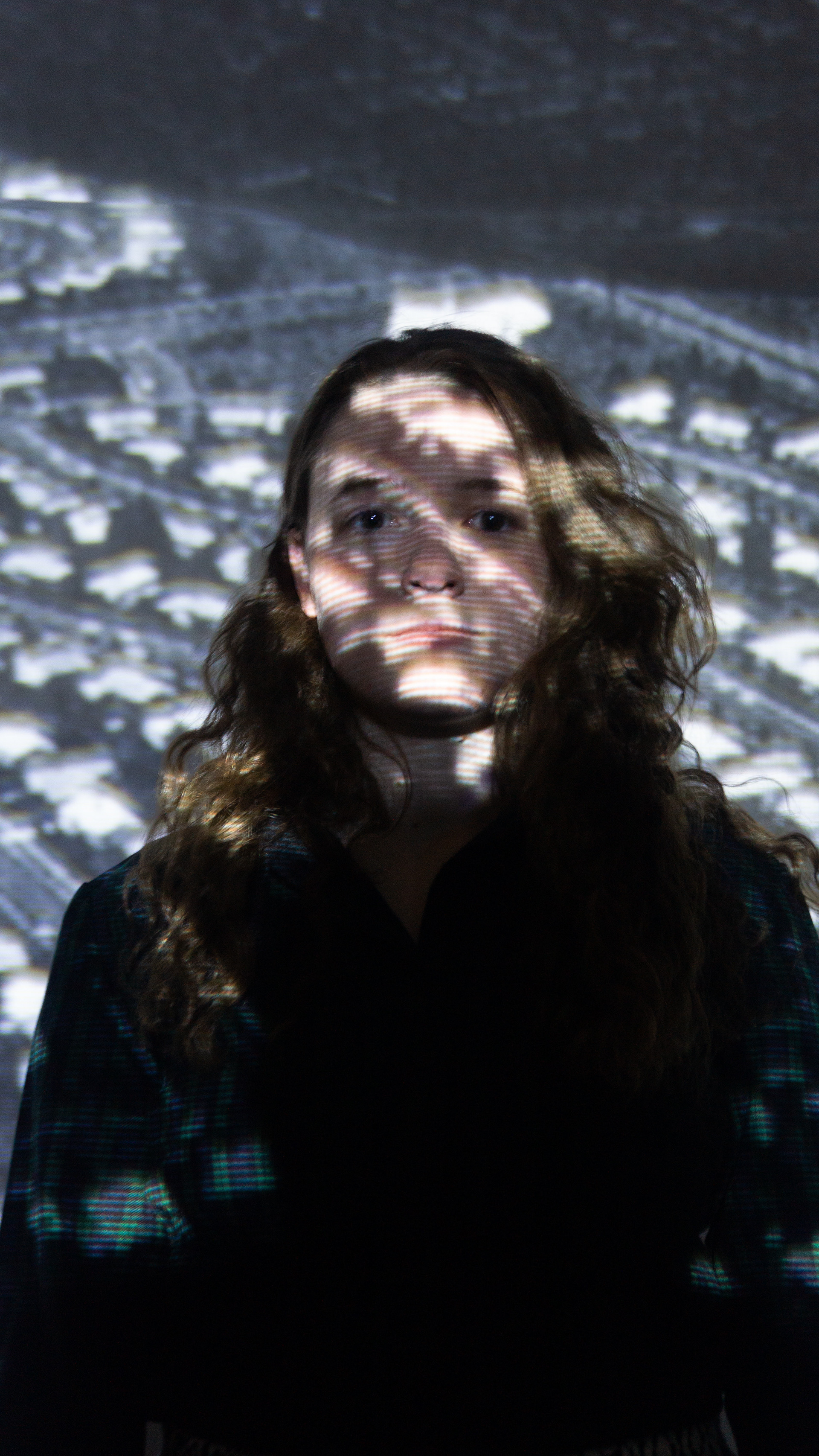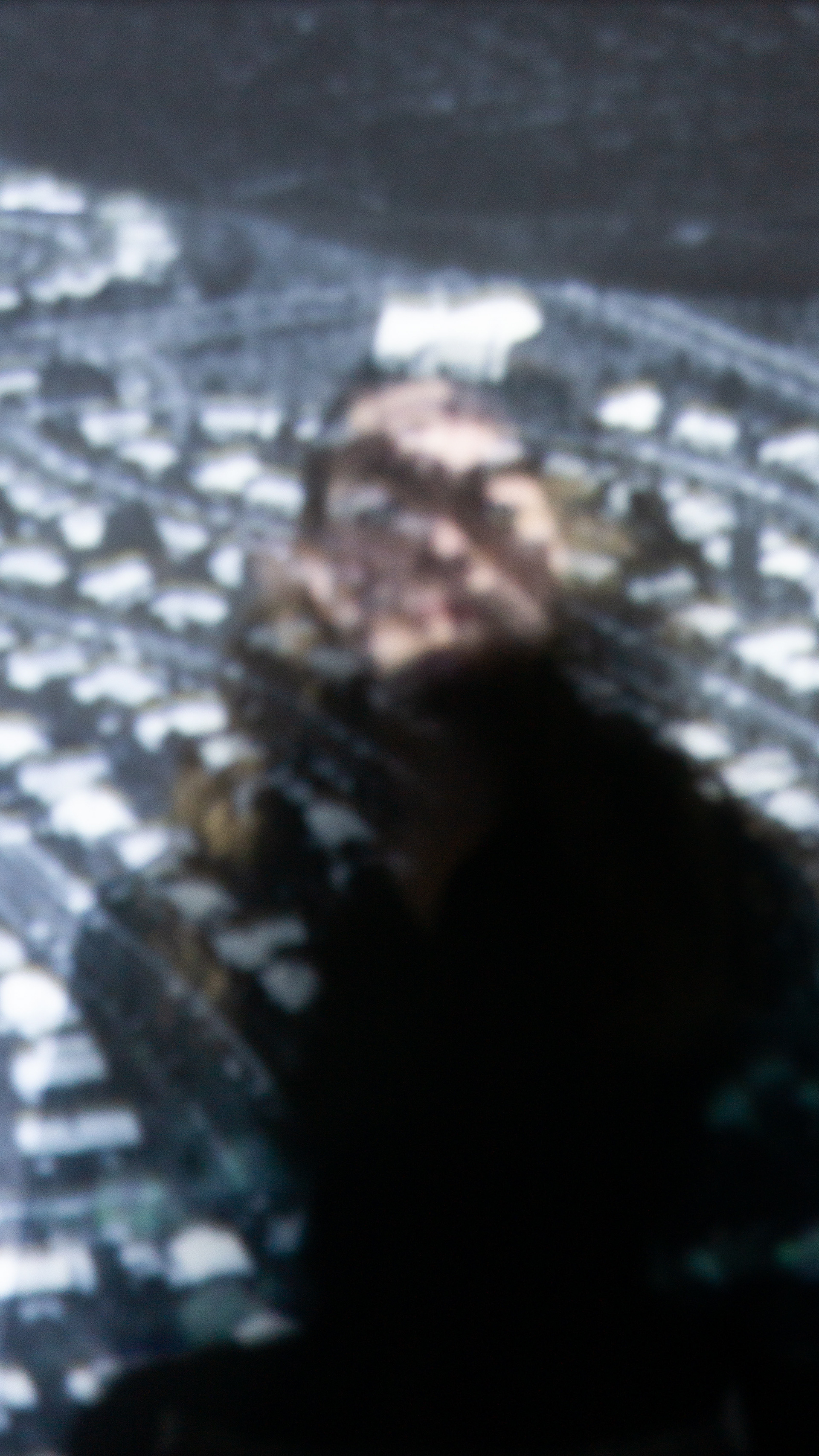Zeitgeist
Retrofuturism is a practice in identifying the zeitgeist of each decade in relation to how people envisioned their future. I am not supposing that this project encapsulates the myriad of philosophies in an entire decade. Instead, a few themes are traced throughout works of media that have become persistent in modern times. I have found the themes of technological advancement, social relationships, and submitting to a status quo have proved universal.
THE SPREAD AS A MEDIUM
Instead of creating a book that must be read in a linear fashion, I chose to create a series of six spreads. One composition anchors the spread, and portraits of the characters fold out. I found this method to be satisfactory because of the interrelated themes throughout the work. The pages can be arranged in different configurations to compare themes in different ways.
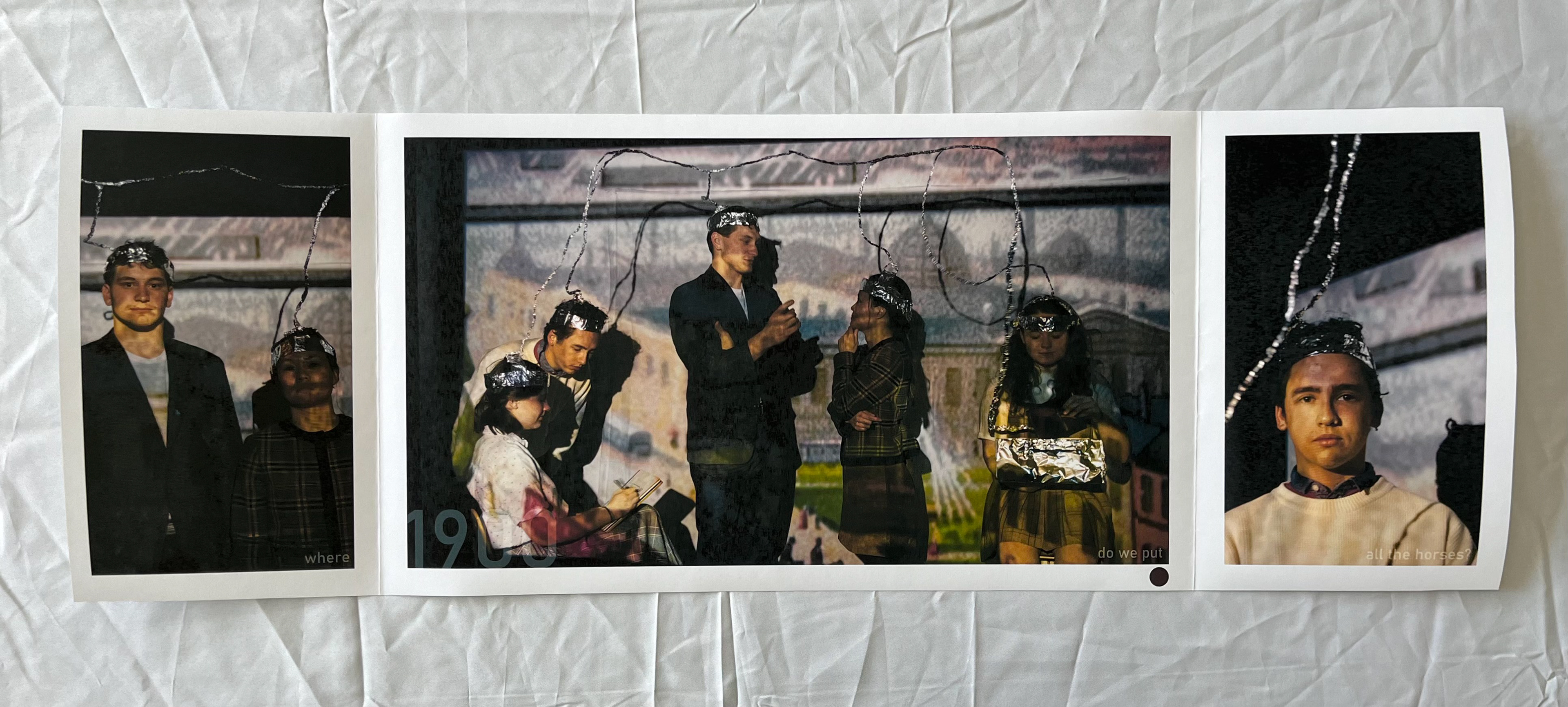
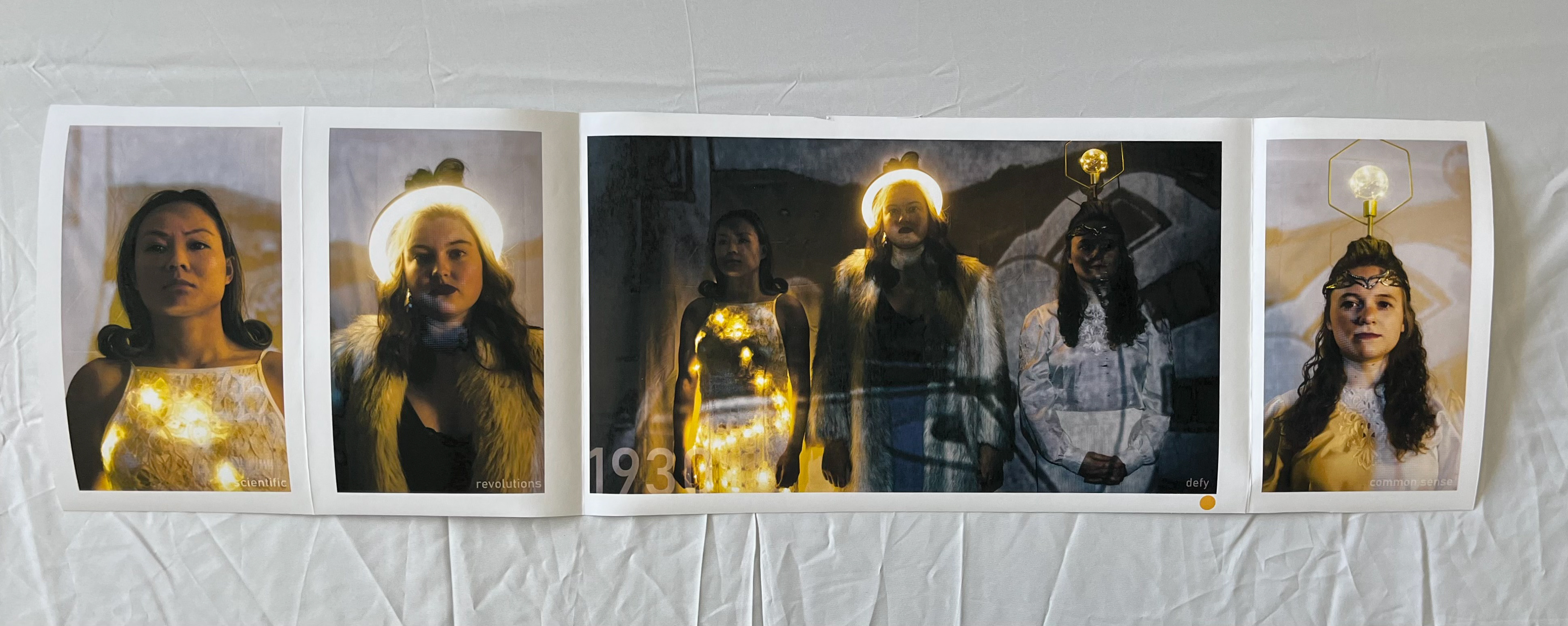
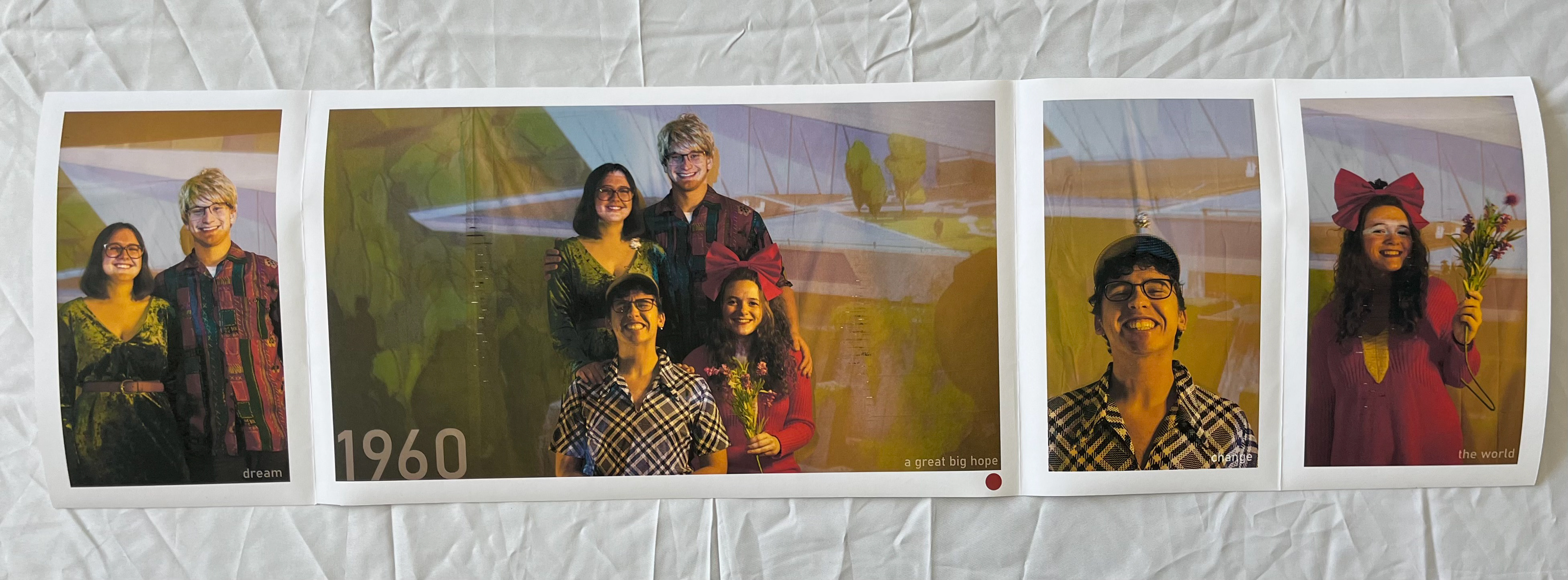
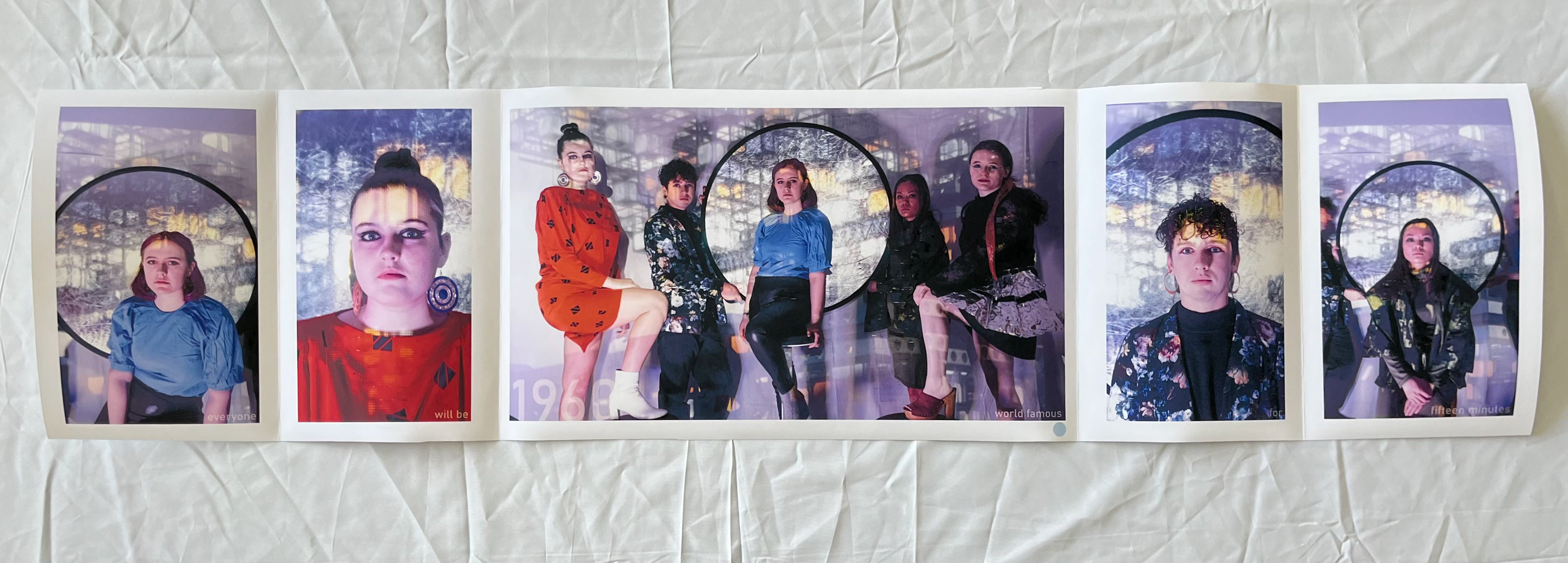

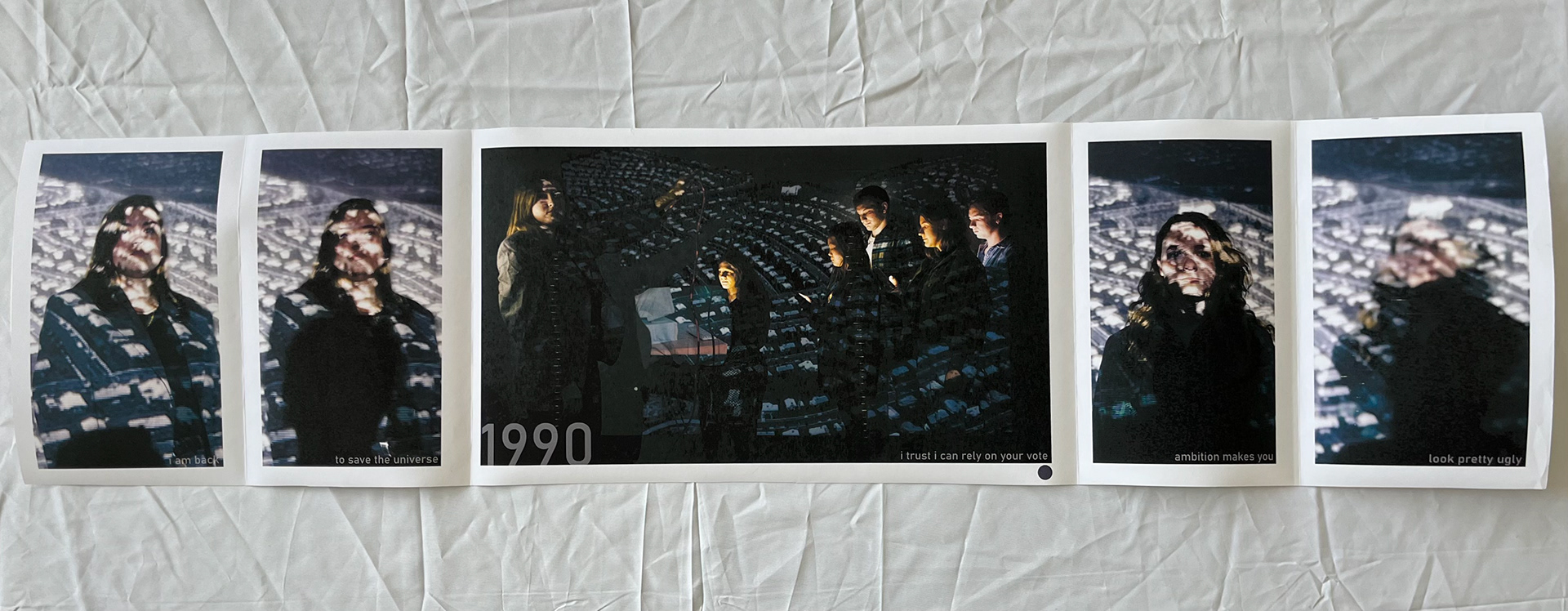
1900: one hundred year forecast
"Where do we put all the horses?"
In drawings and postcards, visionaries in the early 1900s believed that in year 2000, we would be able to connect to each other through brain machines. They believed we could put books into a box and soak in the material through our machinery.
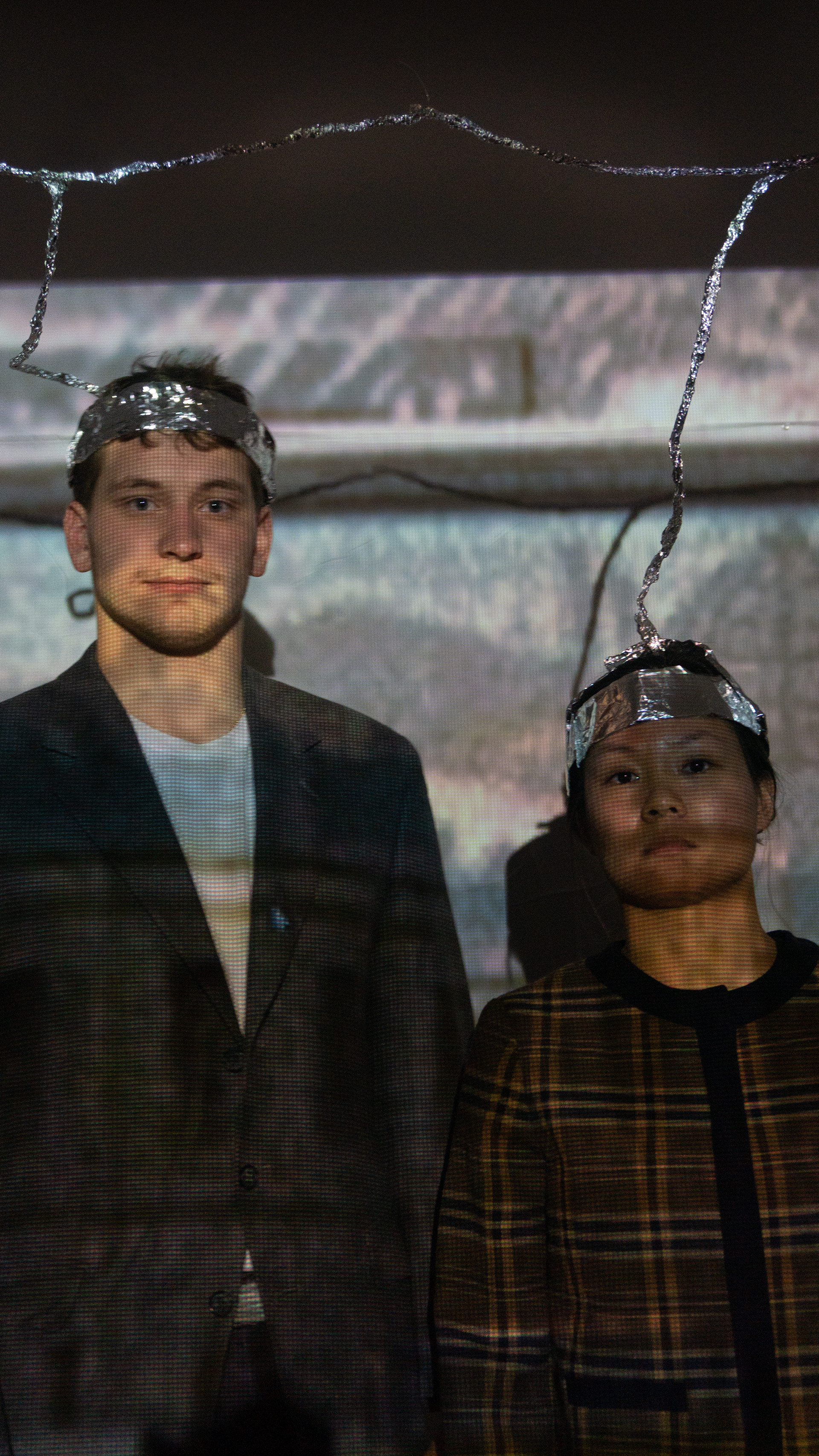
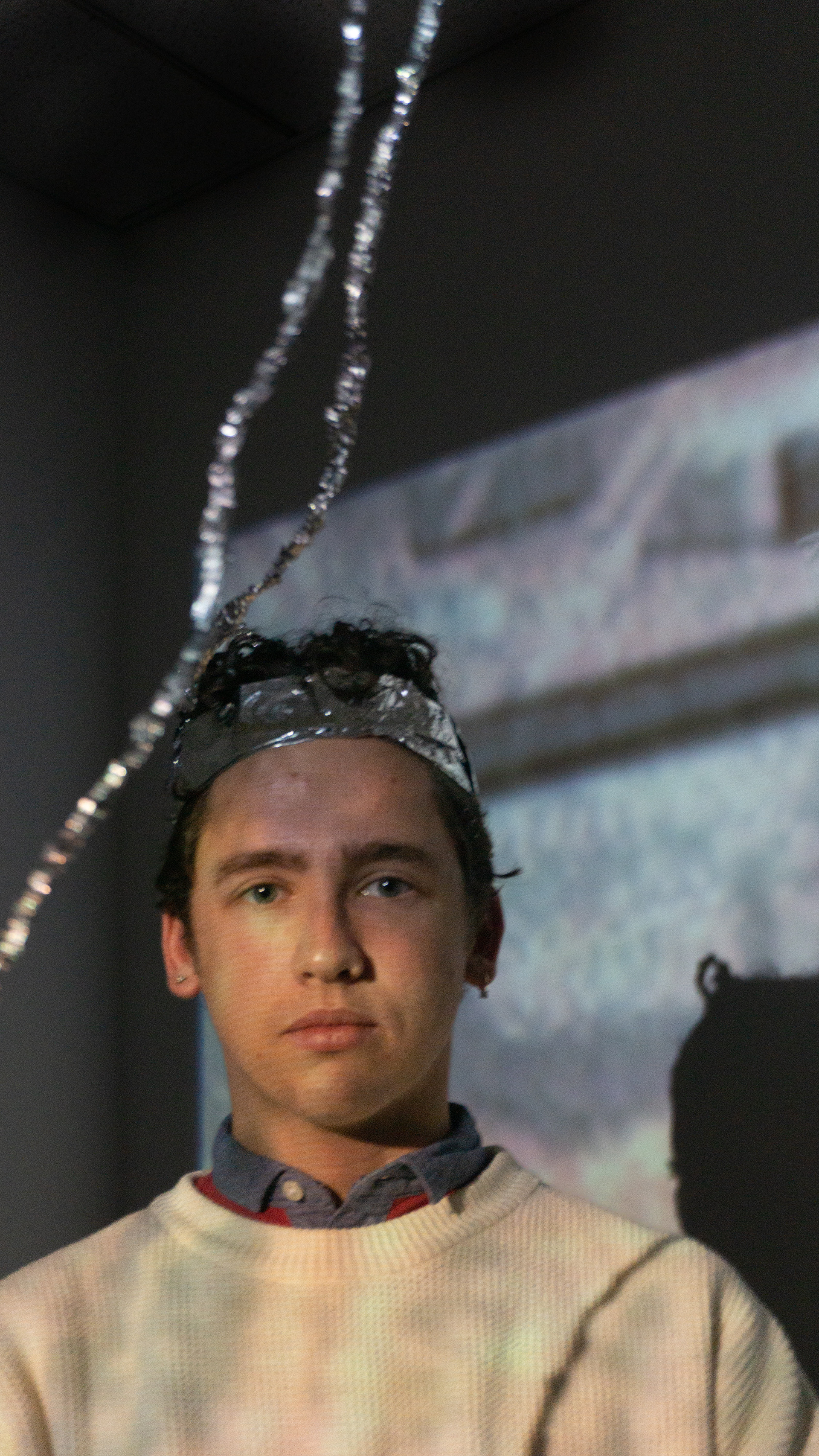
1930: scientific revolution
"Scientific revolutions defy common sense."
In the beginning days of advertising and film in the United States, videos of clothing with incorporated lighting features were the predictions of how capitalism could use science to change how people lived (and obviously sell more clothing!)
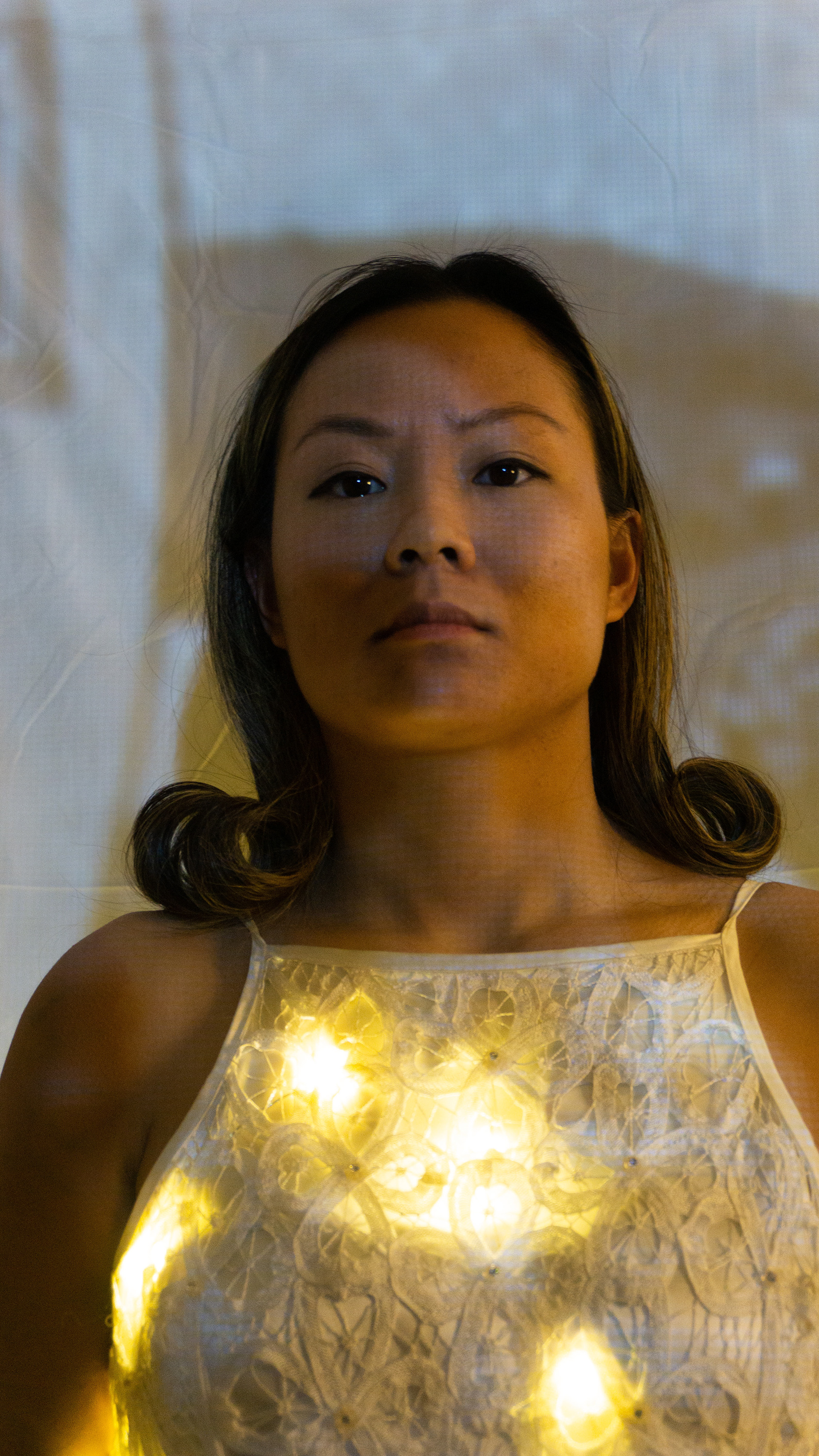
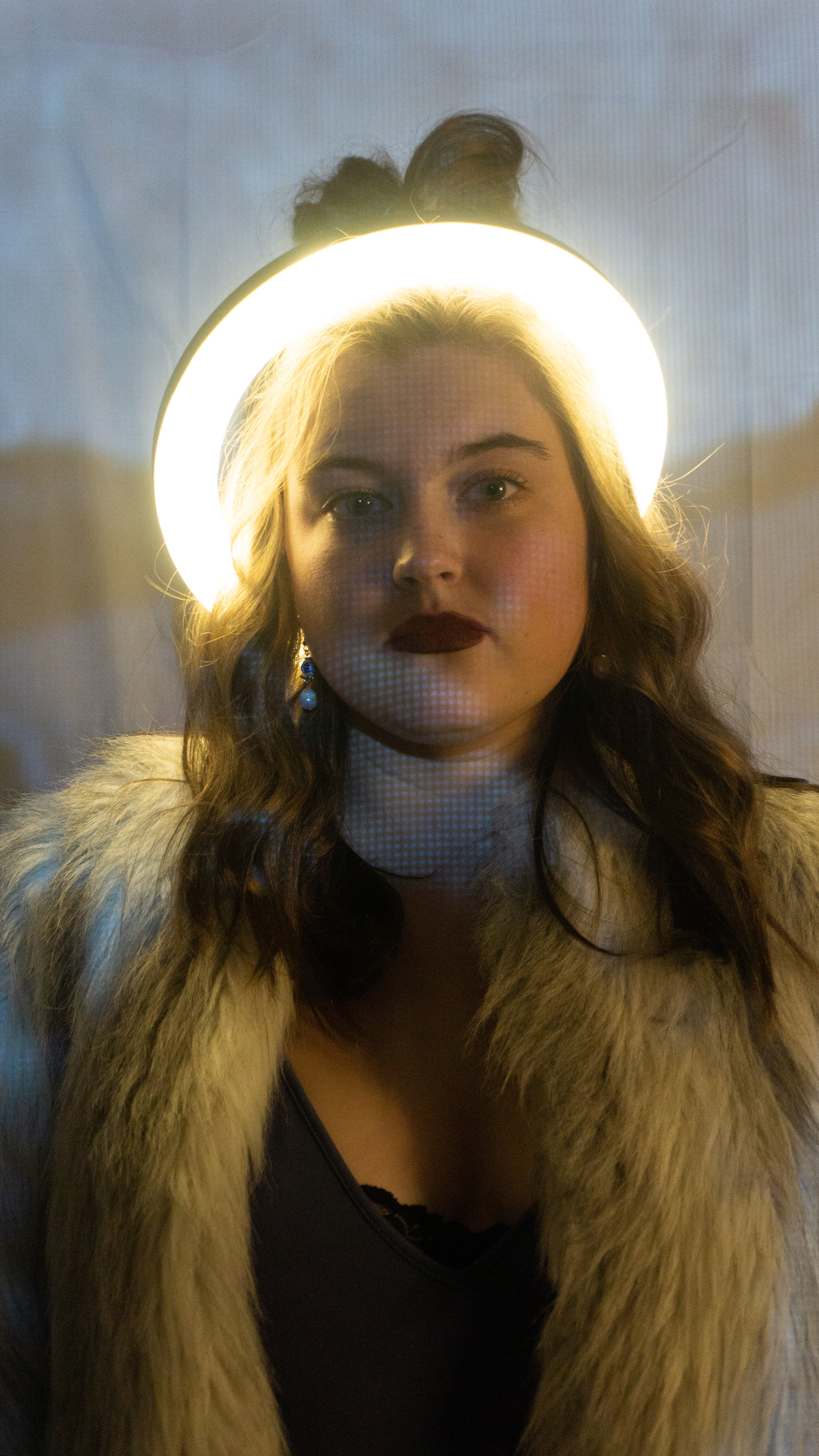

1960: the jetsons
"Dream a great big hope. Change the world."
TV shows like the Jetsons supported midcentury views of the nuclear family and its connection with the advancement of technology. Movies like Meet the Robinsons and The Incredibles have picked up on the midcentury-futuristic visions of striking architecture and gadgets making home-life more convenient.
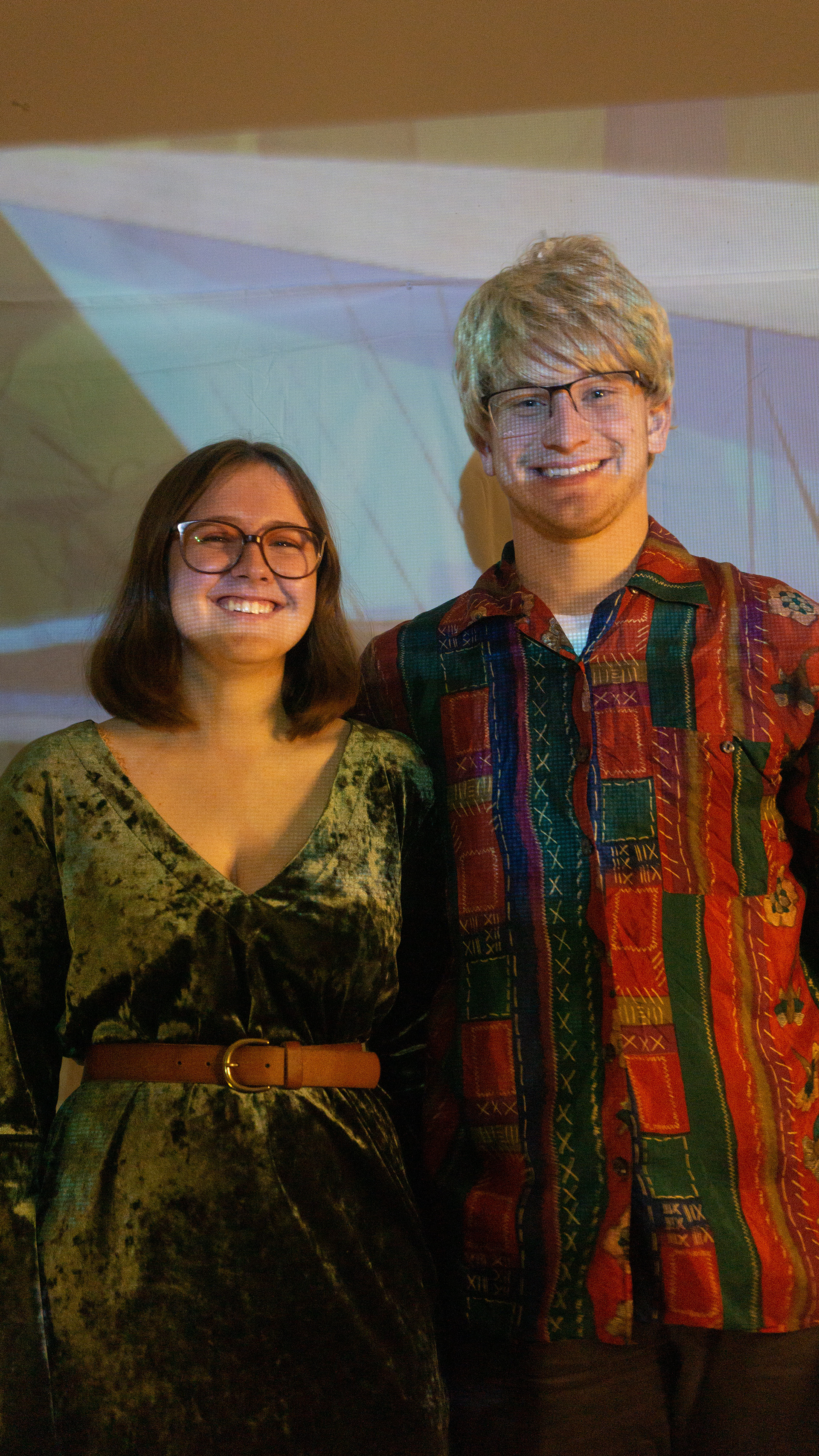
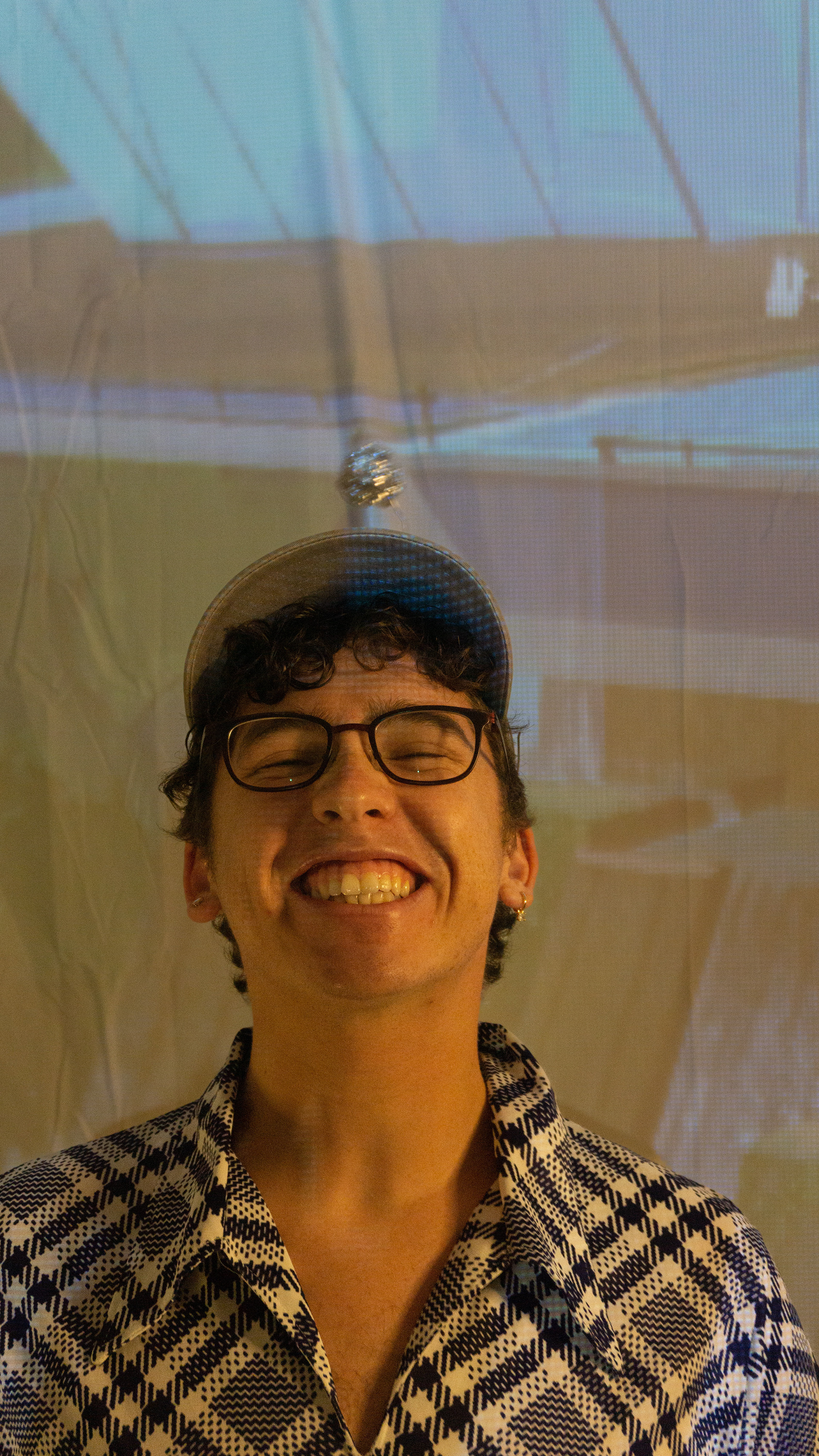

1960: vogue
"Everyone will be world famous for fifteen minutes."
One of the golden ages in the relationship between photography and fashion, artists in the 1960s predicted the fashion of the future would look bold and metallic.
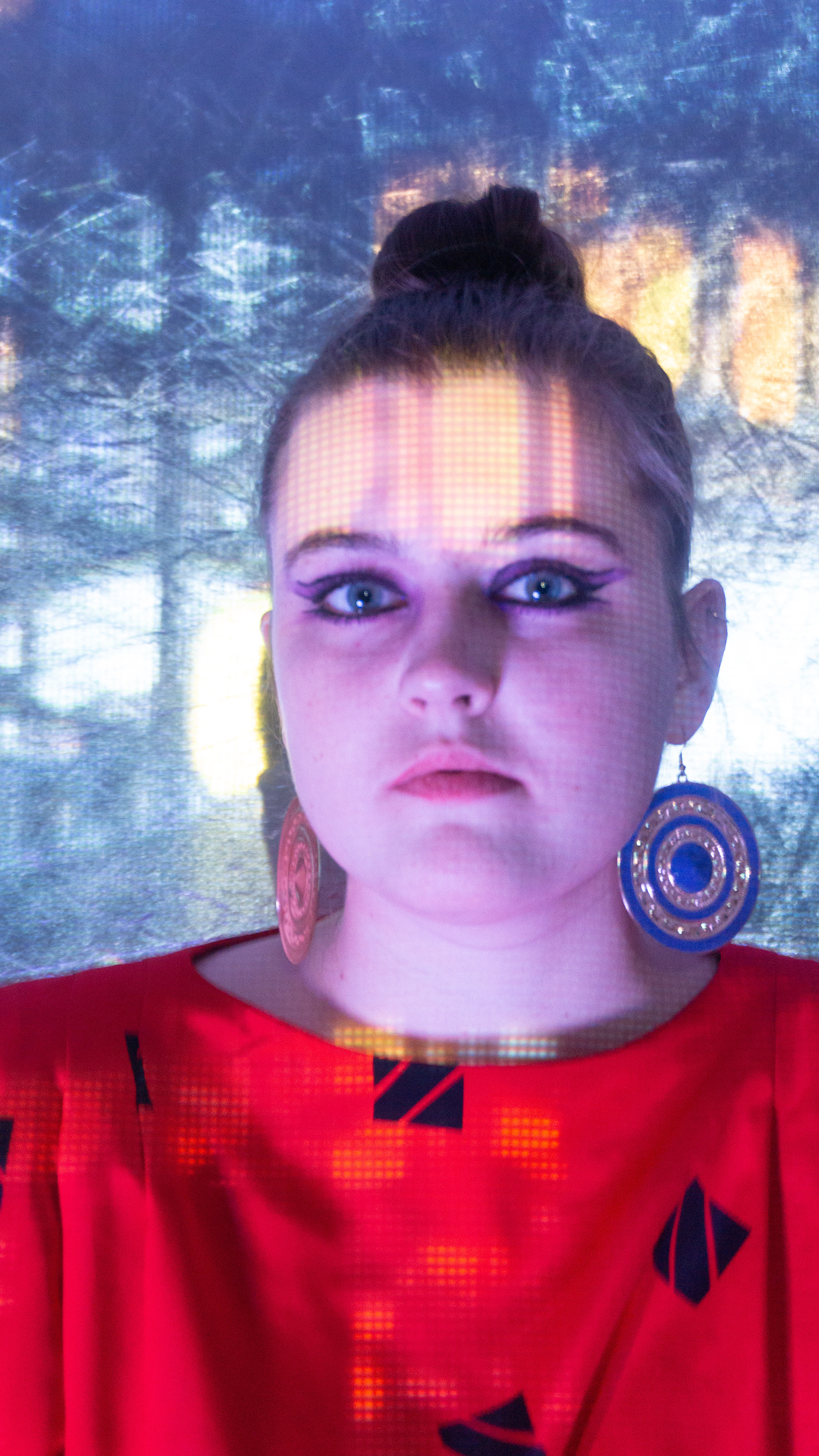
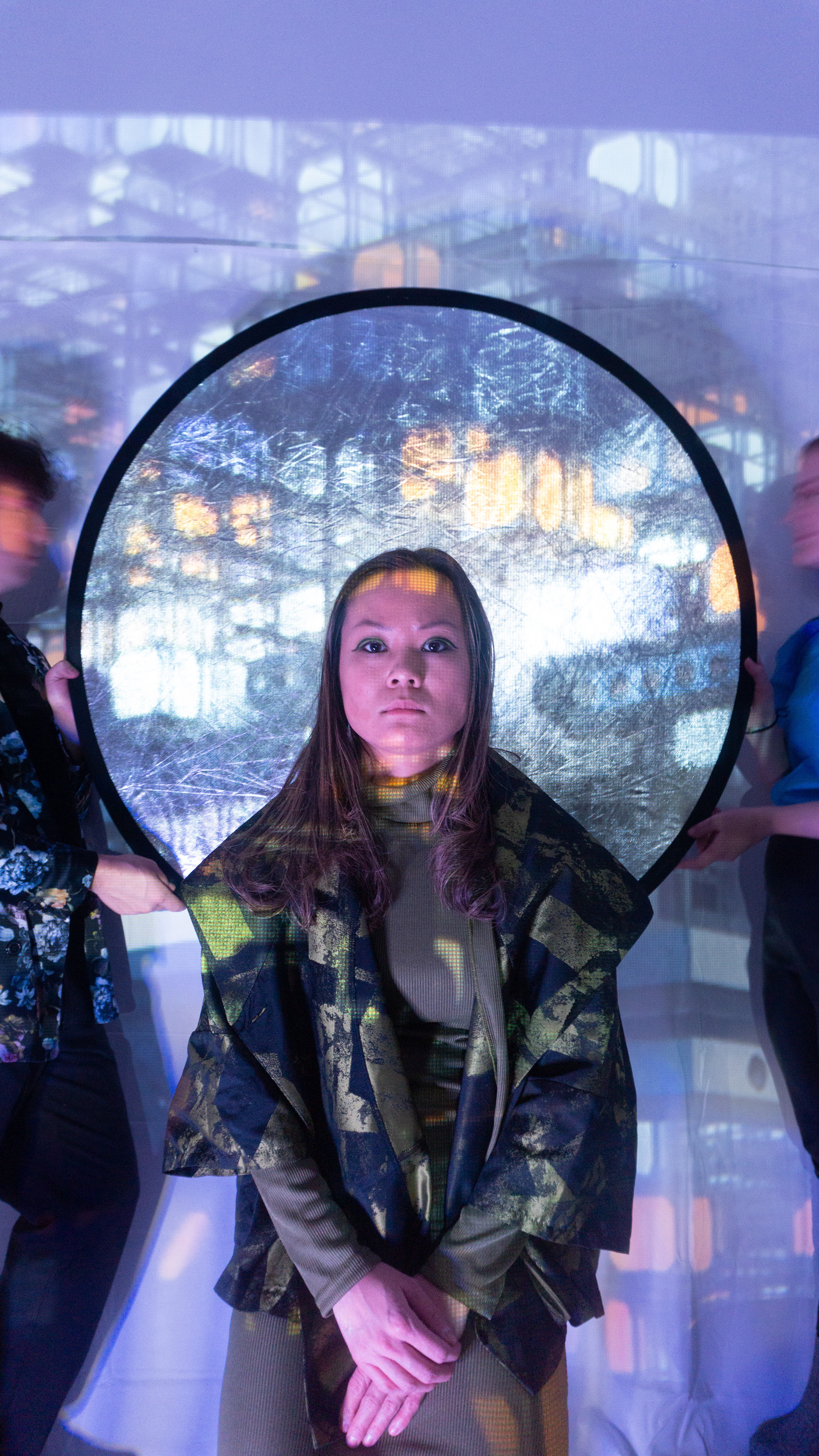


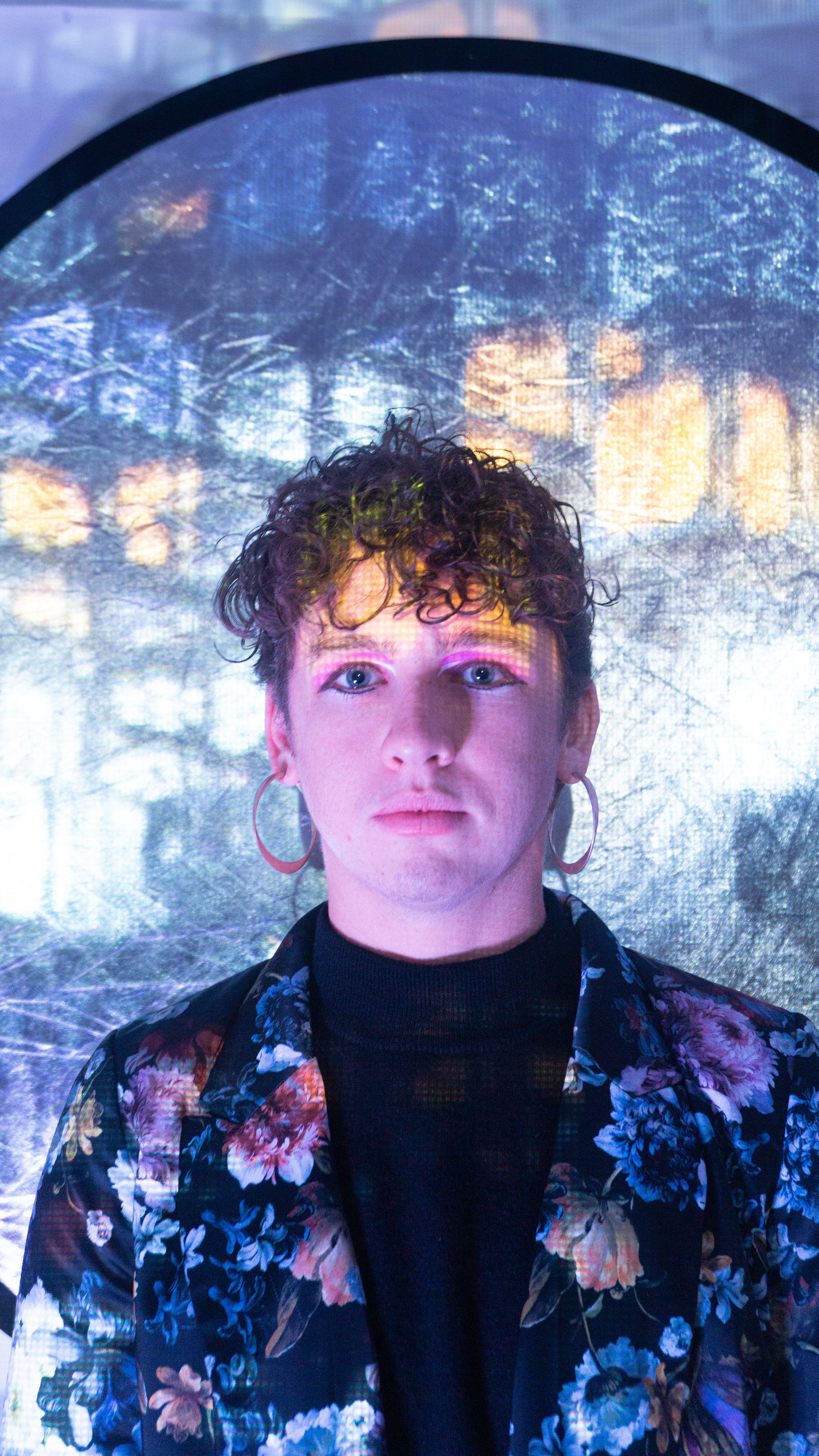
1980: blade runner
"Quite an experience to live in fear, isn't it? That's what it is to be a slave."
One of the most famous movies from the 1980s is Blade Runner, starring Harrison Ford as a hunter of Replicants (a type of humanoid robot.) The movie is set in a dystopian future where society is struggling to determine what it means to be human in the wake of artificial intelligence.

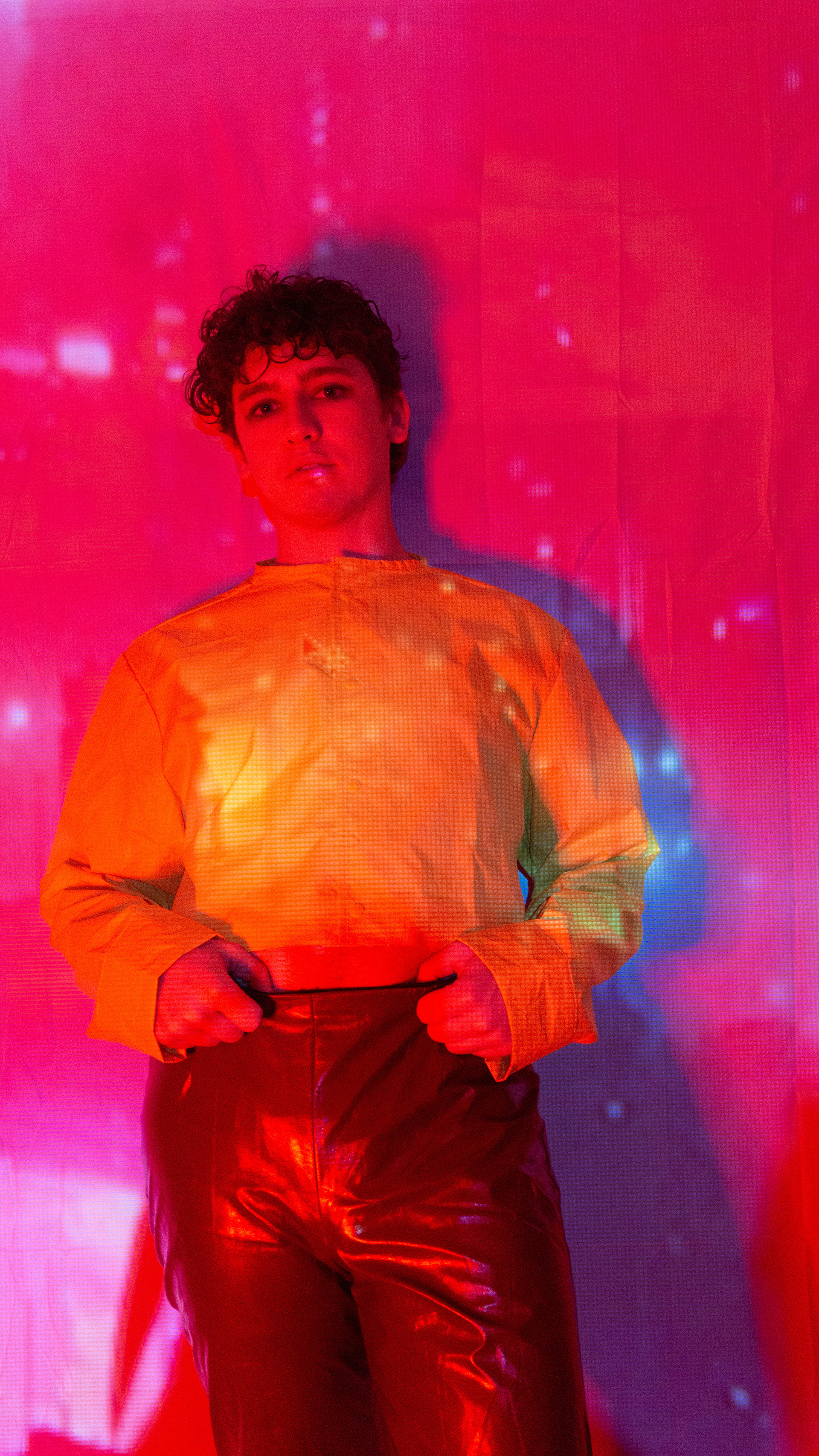
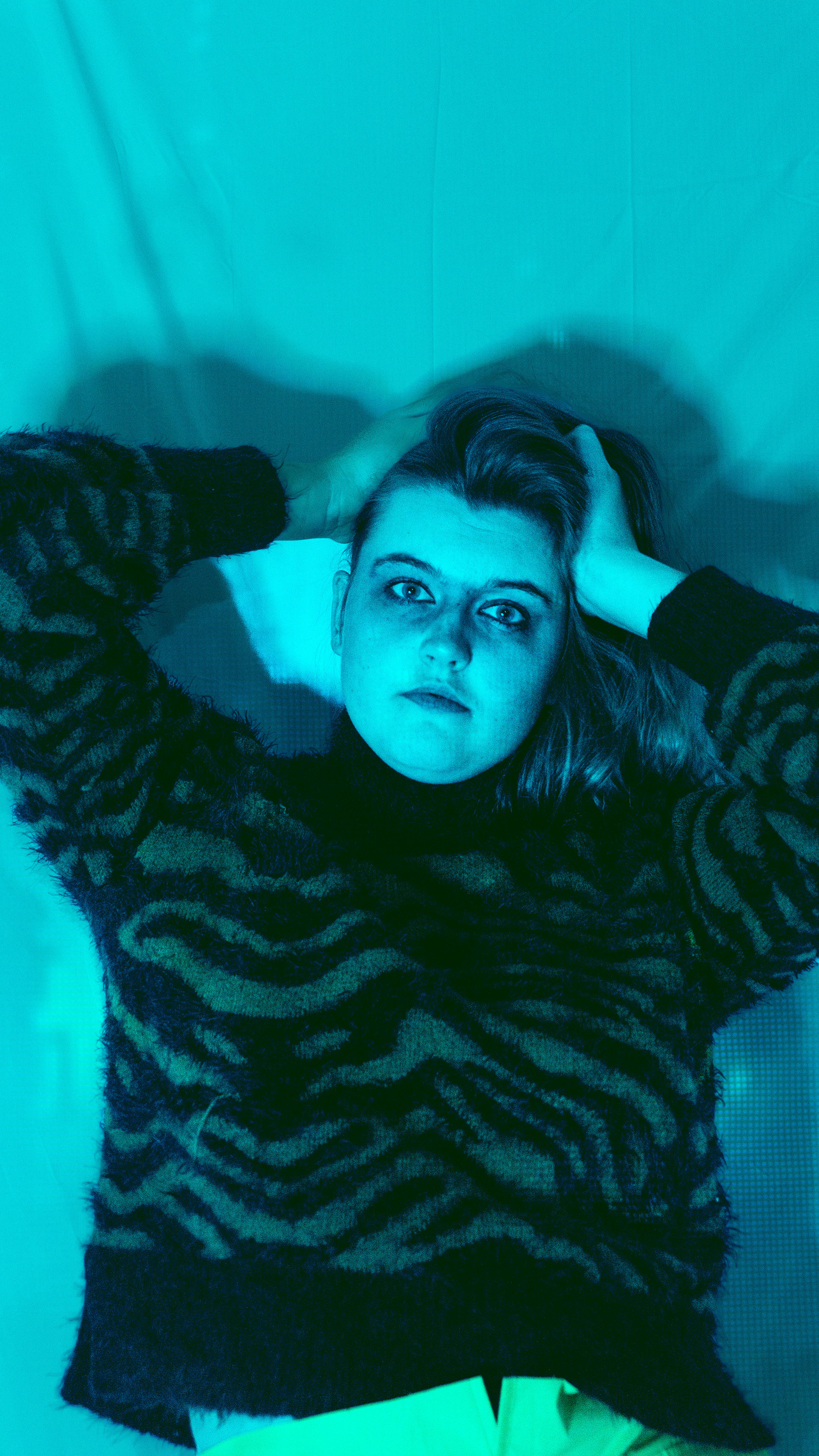
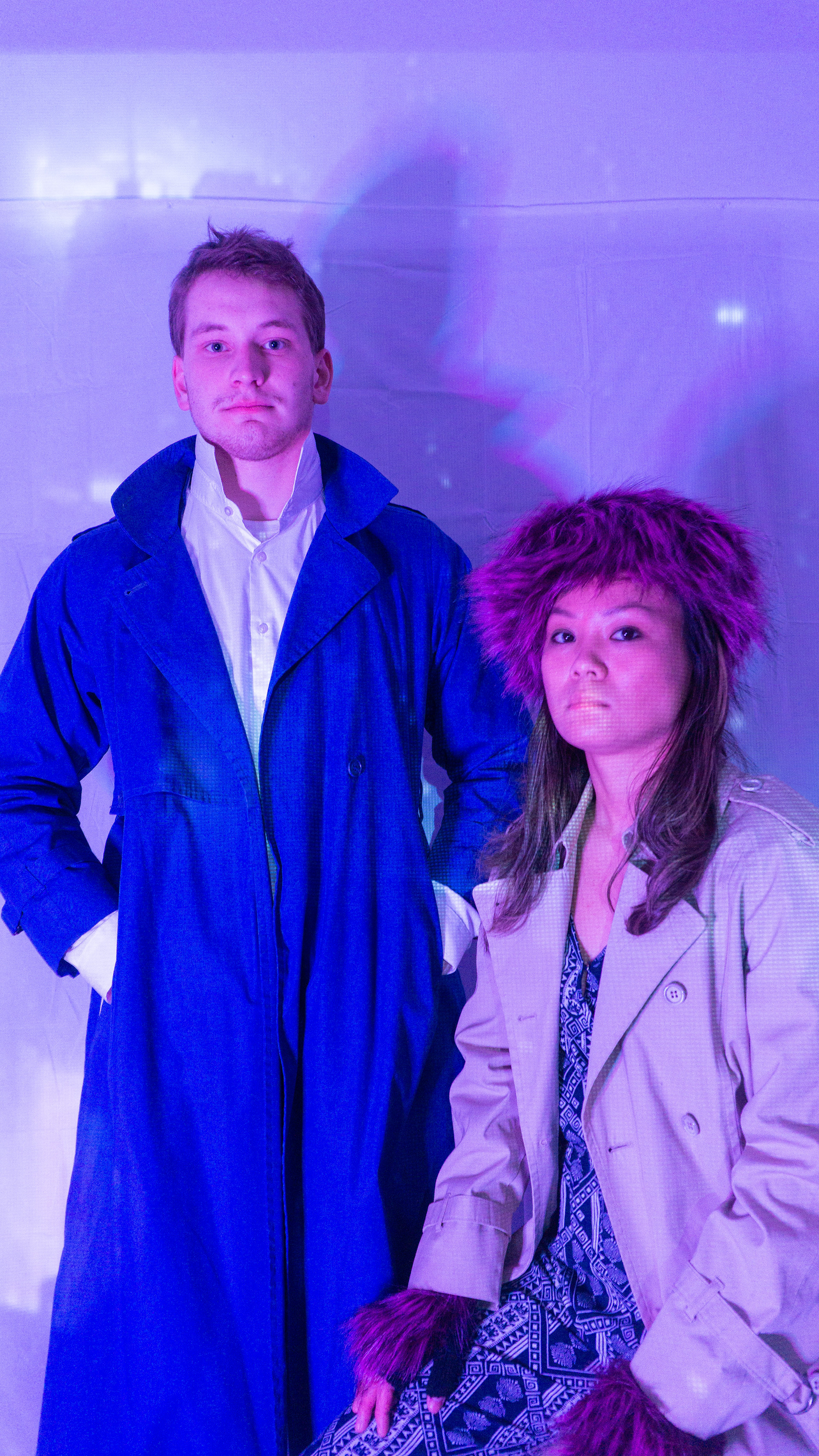
1990: RADIOHEAD
"I'm back to save the universe. I trust I can rely on your vote. Ambition makes you look pretty ugly."
Ahead of their time, Radiohead called out technology as having the potential to brainwash and pacify people against their will. They saw how leaders abused power already and saw how they might use entertainment media and propaganda to keep people distracted.
